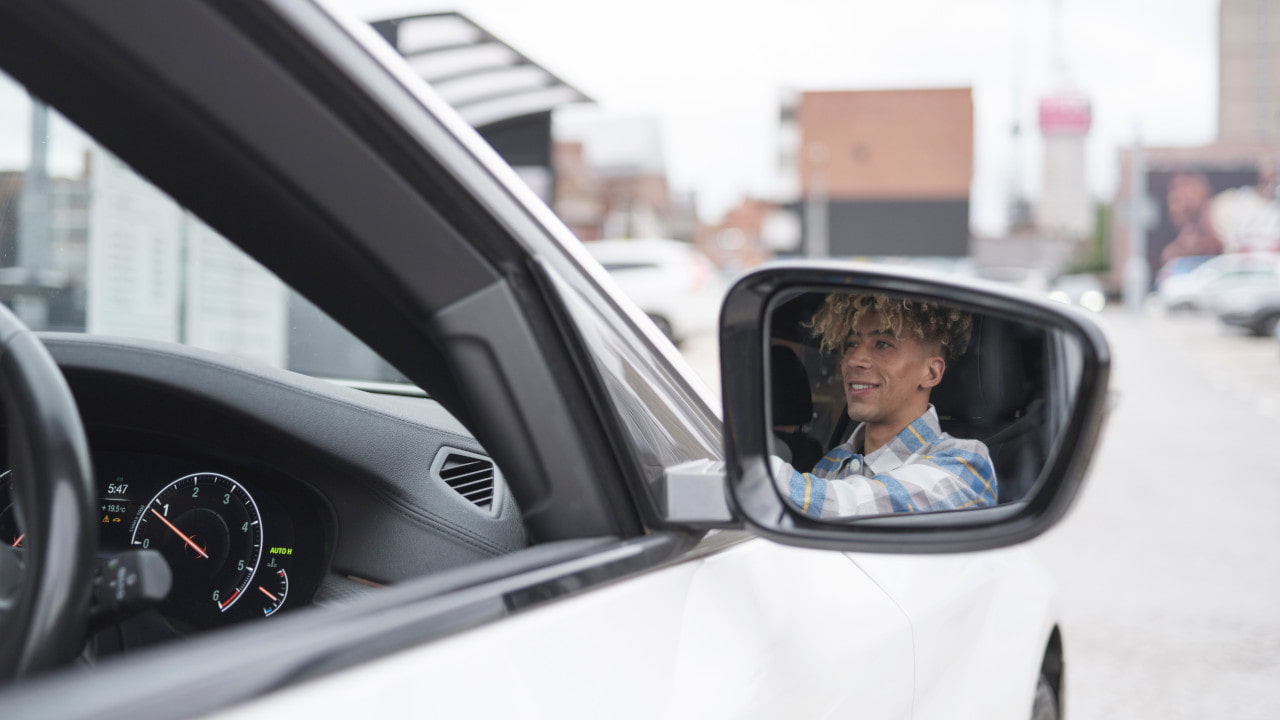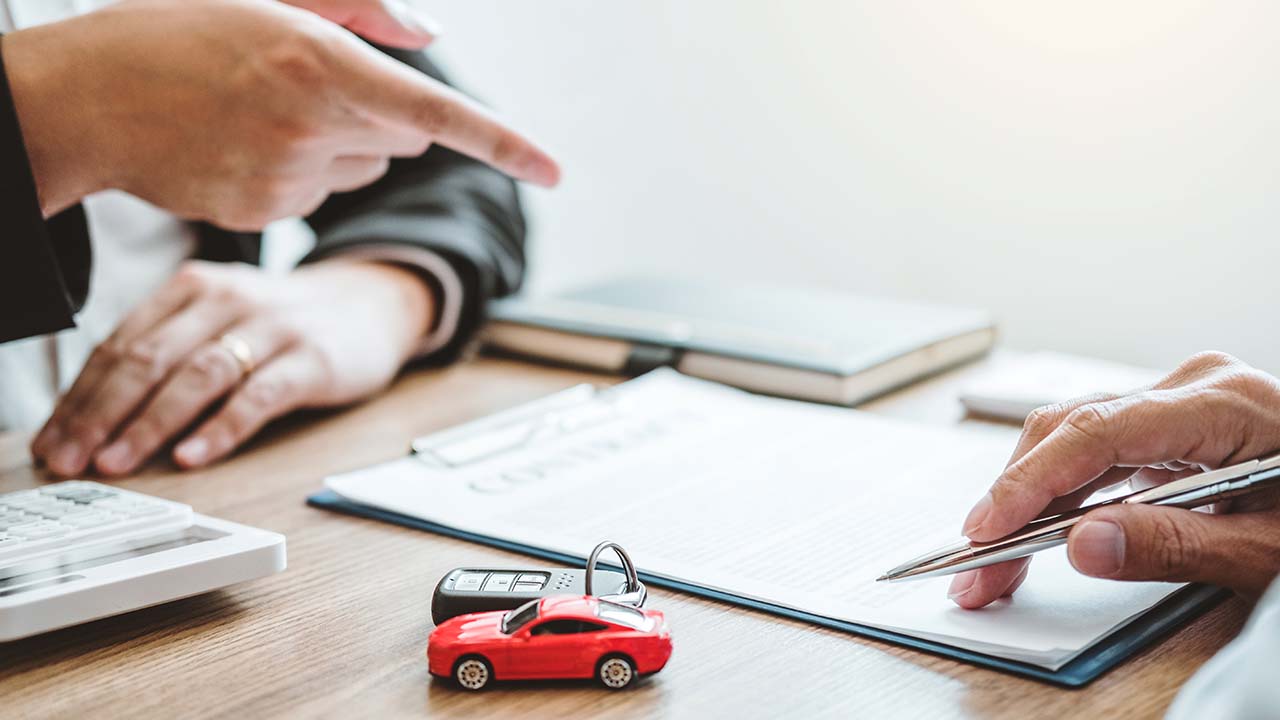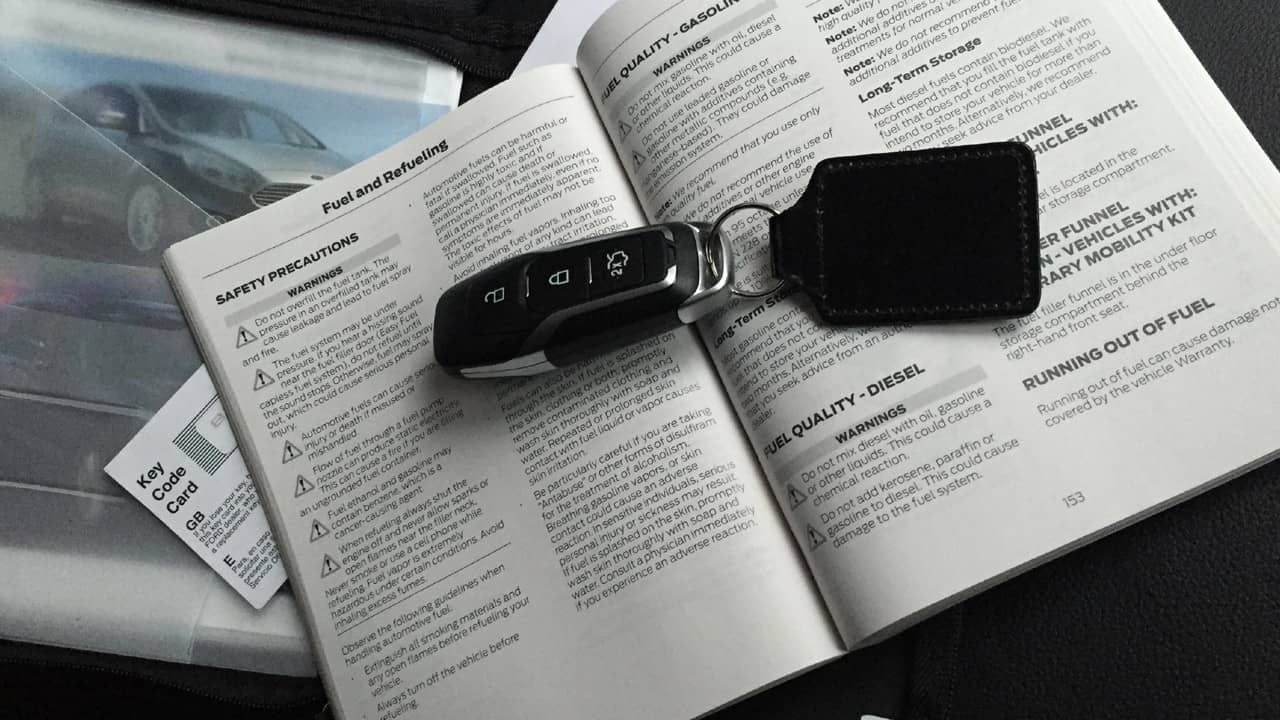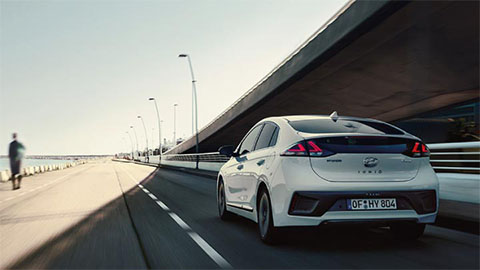How to Sell a Car | Top Tips for a Successful Sale
21st Feb 2025
By Edward Cook
Selling a car comes with plenty of options, but choosing the right one for you can be a challenge. Should you go for the convenience of selling to a dealership, the potential higher price of a private sale, or the simplicity of part-exchange?
Factors like your car’s condition, how quickly you need to sell, and how much effort you’re willing to put in all play a role in finding the best approach to selling your car.
To make things easier, we’ve broken down the most common ways to sell your car, the steps you'll need to take, and weighing up the pros and cons of each. Whether you're aiming for a quick sale or the best possible price, this guide will walk you through the process to help you sell your car with confidence.
- What are the different ways of selling your car?
- Steps to selling your car
- What to do after selling your car
- Frequently asked questions
What are the different ways of selling your car?
In today's world, it's arguably the easiest it's ever been to sell your car. Thanks to the popularity of social media, as well as dedicated car selling services from dealerships and other providers, the days of 'for sale' signs in your vehicle's window are all but numbered.
However, with a variety of options available, knowing which one is best-suited to your personal needs can be quite the challenge. We've explained some of the most popular methods of selling your car below, to help you understand your options in more detail.
Selling your car to a dealership/car-buying service
The heavy majority of dealerships, both local and national, will consider taking your car off your hands in exchange for cash as part of their dedicated car-selling service. A common misconception is that dealerships will attempt to convince you to buy a car too, but that's not the case - any reputable dealership will allow you to sell your car and walk away with no commitments. The process can differ from provider-to-provider, but most will provide you with an online valuation before inspecting the vehicle in-person and agreeing a final price.
In recent years, standalone car buying services have emerged as an alternative way to sell your vehicle. The process for these services is largely the same as what dealerships implement, with you receiving an online valuation prior to a thorough inspection and official sale price. Certain car-buying services are also in partnership with dealerships, so you may find yourself visiting one as part of the process.
However, there are a couple of pros and cons to consider prior to making a decision.
- Convenience: Selling your car to a dealership or car-buying service typically takes the majority of the legwork out of the process, allowing you to benefit from a stress-free experience.
- Safety: Compared to other car-selling methods, selling your car to a registered company can give you added protection against scams and other illegal activity.
- Support: The staff at dealerships/car-buying services can provide advice related to the process so you are confident you're making the right decision. They may also offer to assist with clearing your car's finance as part of the deal, leaving you with whatever equity remains.
- Price: The price you'll receive is typically less than if you were to sell your car privately, as the provider will need to make a profit when they sell your vehicle themselves. However, the added convenience of using these services generally outweighs the difference in sale price.
- Time: While the convenience/speed of car-buying services is a definite advantage, it's worth considering your next steps before you begin the process. With some providers, you're able to sell your car in as little as an hour, so you may be left without a car for a period of time.
Selling your car privately
Despite the rise of dedicated car-buying services, selling a car privately is still a go-to choice for many owners across the UK. With this method, you're in total control, allowing you to set a price you're happy with, but this comes with more legwork than other methods. You'll have to negotiate a price, arrange test drives, prepare the car and handle the actual sale. However, selling a car privately is still one of the most popular methods out there and isn't as complicated as it may first seem.
Most people choose to advertise their car on social media or popular digital marketplaces nowadays, as this allows them to reach a large amount of potential buyers. You may also have some luck in advertising locally or through word-of-mouth, but that method isn't as common as it once was.
Before you commit to selling your car privately, there are some pros and cons to consider:
- Maximum sale price: When selling a car privately, there's no middle-man making a profit between you and the eventual end owner, so you're able to sell your car for a price that's closer to its actual market value.
- Control: You're in control of setting the price and any negotiations that may take place; if you're unhappy at any stage, you can choose to end negotiations and wait for interest from elsewhere.
- Greater flexibility: Some car-buying services may not purchase cars that have modifications, whereas private buyers may be more interested in cars that have them. As long as you accurately disclose the modifications, there's no hurdle in selling cars that aren't completely original.
- Responsibility: You'll be responsible for preparing the car, handling negotiations and test drives and filing the correct paperwork after the sale, which may take up a significant amount of time.
- Reduced protection: Social media and online marketplaces are known to be the operating grounds of some scam artists, leaving you more susceptible to illicit activity - pay particular attention to potential buyers and walk away from a deal if you ever feel uncertain.
- Legal considerations: There are some legal elements to consider when it comes to selling your car, so it's worth doing some research to ensure you're acting within the law. For example, you're not technically allowed to sell a car if it has outstanding finance - you'll need to clear any finance before your car is sold.
Part-exchanging your car
One of the most popular methods of selling a car for those that know they want to a new set of wheels, part-exchanging allows you to include your current vehicle within the agreement for your next one. Typically used instead of or alongside a deposit, the value of your vehicle will be taken away from the overall purchase price of your next vehicle. If your current car is worth more than your next one, then you will be given the difference.
The actual process of part-exchanging your vehicle will typically be similar to that of a dedicated car-buying service. You'll receive an initial valuation followed by an in-person inspection before agreeing on the final price. It's a straightforward process that takes out much of the hassle of selling a vehicle, and the dealership's staff can also support in finding your next vehicle if you're not exactly sure of what you're after.
Before you commit to part-exchanging your vehicle, it's worth considering a few elements:
- Value: More often than not, dealerships may be able to offer you a slightly better price as you're purchasing your next vehicle from them. They can also assist with explaining the process in more detail, so you're sure you're making the right decision.
- Convenience: Part-exchanging your car is typically a hassle-free experience, allowing you to avoid much of the legwork associated with selling a vehicle. The dealerships can also assist in clearing any outstanding finance as part of the overall deal.
- Safety: The heavy majority of reputable dealerships offer a part-exchange service, so you can rest assured knowing you're in safe hands and will receive a valuation that's accurate to current market values.
- Less flexibility: If you choose to use a part-exchange service, then you'll be required to purchase a car from the same dealership as part of the overall deal. We'd recommend deciding what kind of car you'd like next so you can find a dealership that has the right options in-stock.
- Sale price: Similar to when using a car-buying service, the dealership taking your vehicle within the part-exchange will want to make a profit on your vehicle when they come to sell it, so you'll likely be offered slightly less than what you may receive from a private sale.
- Less flexibility: Some dealerships may not consider cars that have higher mileage or modifications for a part-exchange deal. However, for particular older vehicles, many dealerships offer the likes of scrappage schemes that still ensure you walk away with a great deal.
Steps to selling your car
Despite being a relatively straightforward process, there are a number of elements that you must do prior to selling your car that can make the overall process feel a little daunting. The exact steps will differ slightly depending on which method of selling you choose, but you'll generally need a complete a list of actions to ensure you get the most for your car and comply with the law, some of which are detailed below.
Research your car's value
The first step many will take is to develop an understanding of how much their vehicle is worth, putting them in a better position to make a decision regarding what you're plans are after the sale is confirmed. There are plenty of online valuation tools available that give you an indication of how much your vehicle may be worth. It's also worth doing some manual research of similar cars on online marketplaces, so you're better equipped to set a price and handle negotiations.
Wehn valuing your car, you'll need to consider any cosmetic or mechanical damage, your vehicle's service history and its spec, additional extras or any modifications you have made, as these can have a significant impact on your car's worth. Cars with a clean slate are normally worth more, so remember to deduct a fair amount for any maintenance that hasn't been completed, or get the work done before advertisement to maximise the total sale price.
Preparing your car for sale
First impressions count, particularly for people looking to purchase high-value items from strangers, so a bad one may make or break the sale of your car before negotiations even take place. By making your car look and operate at its best, you're increasing the likelihood of a succesful sale, but what steps are required to prepare your car before you advertise it?
The first thing you'll want to consider is addressing any known issues with the car such as cosmetic or mechanical damage, as well as any outstanding maintenance work. By doing so, you're proving to potential buyers that the car is well looked after, rather than giving them reason to doubt. If you're not able to get the work completed, ensure you're totally transparent with potential buyers regarding any damage and the vehicle's maintenance record, to avoid any dissapointment later down the line.
Once you're happy with the car's overall condition, you'll want to create an accurate advertisement that details the car's features, history and state. The more detail the better here, as you're equipping interested parties to make an informed decision on whether your car is suitable for them. Taking great photographs of the car's interior, exterior and finer details is another effective way to attract buyers, but before you do so, make sure you've given the car a thorough clean inside and out, as some may suspect you're hiding damage or imperfections underneath the dirt.
Arranging viewings/test drives
It's highly likely that potential buyers will want to physically see and test the vehicle for themselves prior to purchasing it, as this allows them to determine whether it's the right for them. It's common practice for you to get a few details from the interested party before you agree to a test drive, including their name, address and phone number, as this gives you some additional protection from malicious indiviudals.
Car viewings are typically done from your home address so, once you've agreed a date and time, provide the other party with your details. Many buyers also bring a third-party with them, such as a knowledgable friend or certified professional, to ensure the car is as advertised and there are no hidden defects, so don't be anxious if more than one person arrives. If you are nervous about inviting strangers to your home, then asking a friend or family member to be present during the viewing can give you extra comfort/reassurance - it's a good idea to make sure you're transparent with the buyer regarding who will be there, too.
If the potential buyer wants to test drive the vehicle before agreeing to a deal, then you'll need to ensure they are fully covered by an adequate insurance policy. Don't be pressured in to letting them drive the vehicle without valid insurance, as this could land you in a lot of trouble both legally and financially if something was to happen. There are plenty of temporary insurance providers out there, so the buyer has no excuses for not having proper insurance. You should also go with them on any test drives to ensure they're not tampering with the vehicle while it's out of your sight, or attempting to steal the vehicle once they have the keys.
Be vigilant of scams
While selling your car both privately and to a dealership is very common and relatively safe, there are a number of fraudsters and criminals out there that try to take advantage of the process. If at any time you feel uncomfortable or unsafe, then you're free to walk away from the deal and sell your car elsewhere.
Private sales come with more risk as you're responsible for the heavy majority of required elements, but there are a few steps you can take to give yourself protection. If advertising online, it's worth checking the buyer's profile to see if they look legitimate and ask for details such as name, phone number and address - most buyers will be happy to comply as it develops mutual trust between both parties, but if they're not, it may suggest something is off. Additionally, ensure you are present at every stage of the viewing/test drive process as some may tamper with the vehicle and claim there's damage, therefore lowering the purchase price, and never hand over the keys unless you're in the vehicle.
If selling to a dealership or car-buying service, you're generally better protected by consumer law and official process, but there are some companies that still attempt to take advantage. Ensure the service you're considering is well-reviewed online and read through any paperwork you're given to ensure the deal is fair. If you've followed the other steps recommended above, you should also have an accurate estimated value of your car, so question any low-ball offers and ask them to explain why the price is lower than expected (remember you'll typically get a lower valuation with this method though, as the dealership will be looking to make a profit when they resell your car).
Negotiating a price and confirming the sale
So, you've successfully advertised and prepared your car, a potential buyer is willing to purchase the car after test driving it and you're ready to make the sale, but what do you need to do to legally confirm it?
The first thing you'll want to do is discuss the sale price, as the buyer may want to negotiate having actually seen the car. Again, don't be pressured into settling for less than what you're happy with, but also consider being flexible if the buyer brings fair points to the table regarding damage and imperfections that weren't disclosed. If you're unable to agree on a price, then you're free to inform the potential buyer that you'd like to end negotiations. It may be worthwhile completing some early negotiations prior to the actual visit to ensure both parties are in the same ballpark when it comes to price.
Once a price is agreed, you'll need to discuss the method of payment. There are a number of options here that each have their own considerations:
- Cash:When selling privately, cash is generally the most common method and also one of the safest. Ensure the cash is real and carefully count it out in front of the buyer to ensure that everything is there - you can also request that the buyer meets you at your bank to have it formally checked and counted.
- Bank Transfer: Bank transfer is also a common method of payment, but ensure you've actually received the money in your account before you finalise the deal and let the buyer leave.
- Cheque/Banker's Draft: Whilst a dying method due to more advanced technologies, some people still request to use a cheque or banker's draft. If this is the case, ensure the money has been cleared and is in your account before you let them take the keys. If anything ever feels off, inform the buyer the deal's off and end contact.
What to do after selling your car
Before the new owner drives away with what was once your pride and joy, there are a few final steps you need to take to wrap things up. If selling to a dealership or car-buying service, the majority of these are taken care of for you, but it's still worth double-checking yourself to ensure you're no longer tied to that vehicle.
- Create a receipt: It's worthwhile getting the deal down on paper, to ensure you're covered from certain legal implications further down the line. A typical car sales receipt includes the date, price, vehicle details (such as make, model and reg number), the name and address of both buyer and seller, and a signature from each.
- Inform the DVLA: When selling a car, you'll need to inform the DVLA that you're no longer the registered owner of the car. Most people choose to do this online nowadays, but you can also send off the relevant section of the physcial V5C if you'd prefer.
- Hand over documentation: The new owner will need all of the relevant documentation before they leave. This typically includes the 'new keeper' slip from the V5C, paperwork from the vehicle's maintenance records, MOT certificates and any other details you have. You may also need to transfer any warranties you have on the vehicle, but this process can differ from policy-to-policy, so get in touch with your provider ahead of time to familiarise yourself with those steps.
- Cancel insurance and road tax: As you will no longer have use of the vehicle, you'll need to cancel your insurance policy and the vehicle's road tax. This is usually pretty straightforward and requires a simple phone call - you should get a refund for any remaining months of insurance, minus any admin fees your insurance provider charges. Cancelling your road tax can also be done online, and again, you'll receive a refund for any remaining months you've already paid for. It's worthwhile reminding the new owner that they must have taxed the vehicle and have valid insurance before they drive away.
Sell your car with Evans Halshaw
At Evans Halshaw, we make sure the process of selling your car is as simple and convenient as possible for you. Whether you're looking for a quick sale through our car-buying service, part-exchange, or just an accurate valuation, we’re here to help every step of the way.
With competitive offers, a transparent process, and no obligation to buy another vehicle, you can sell your car with confidence. Get started today by using our free online valuation tool and see how much your car is worth.
Frequently Asked Questions
While it’s possible, selling without a log book (V5C) can be challenging, as the buyer won’t have an easy way to register the car. It’s best to request a replacement from the DVLA to make the sale smoother as having a log book makes you more trustworthy as a seller, and you'll be able to make a sale quicker.
This depends on your preferred method of selling. Private sales can fetch a higher price but take time, while online buyers and dealerships offer convenience. If you choose to sell your car with Evans Halshaw, we provide a hassle-free process with a fair, competitive valuation and no obligation to sell.
Yes, but you’ll need to be upfront about any issues. Private buyers, garages, or specialist scrap or repair companies might still be interested, but expect a lower price. Many dealerships also buy cars with mechanical damage, depending on the extent of the issues and the potential for resale or repair.
Yes, if you sell your car and cancel your policy, most insurers will refund any remaining full months, though admin fees may apply. If you’ve paid in advance, you might be entitled to a partial refund, but some insurers charge a cancellation fee. It's best to check with your provider for specific terms.
Road tax doesn’t transfer with the car, so once you sell it, the DVLA will automatically refund you for any full months left. The new owner must tax the car before driving it.
Yes, you must notify the DVLA to update their records and avoid being held responsible for the vehicle. You can do this online or by sending the relevant section of the V5C by post.
Yes, but you must first notify the DVLA to transfer ownership, which typically requires a death certificate, log book (V5C), and probate documents. Dedicated car-buying services, such as our Sell Your Car offering, can provide additional support and guidance if you're selling your a car on behalf of someone you've recently lost.
The length of time it takes to sell a car depends on the chosen method of selling. Private sales can take days or weeks, while selling to a dealership can be completed within a day. Factors such as price, condition, and demand can affect the speed of a sale.
Where to next?
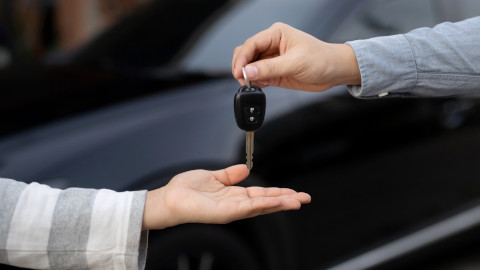
Selling a Car Privately | Everything You Need to Know






